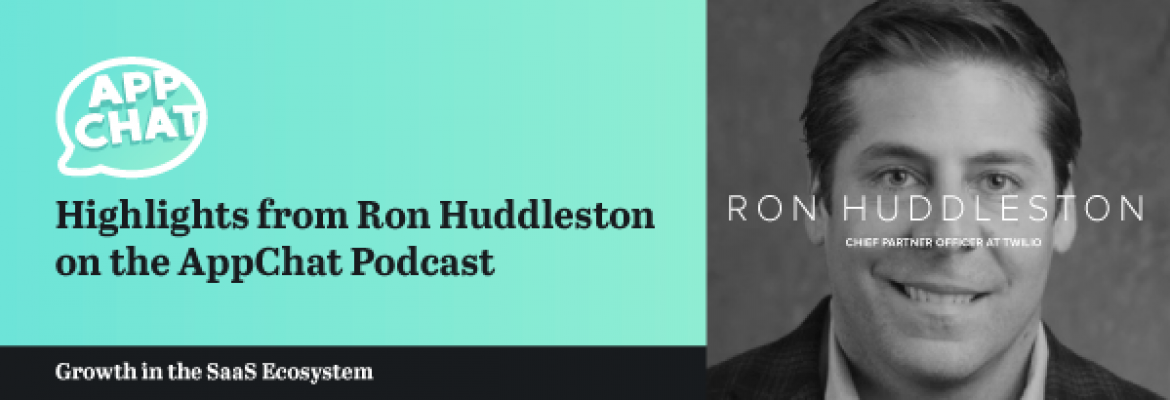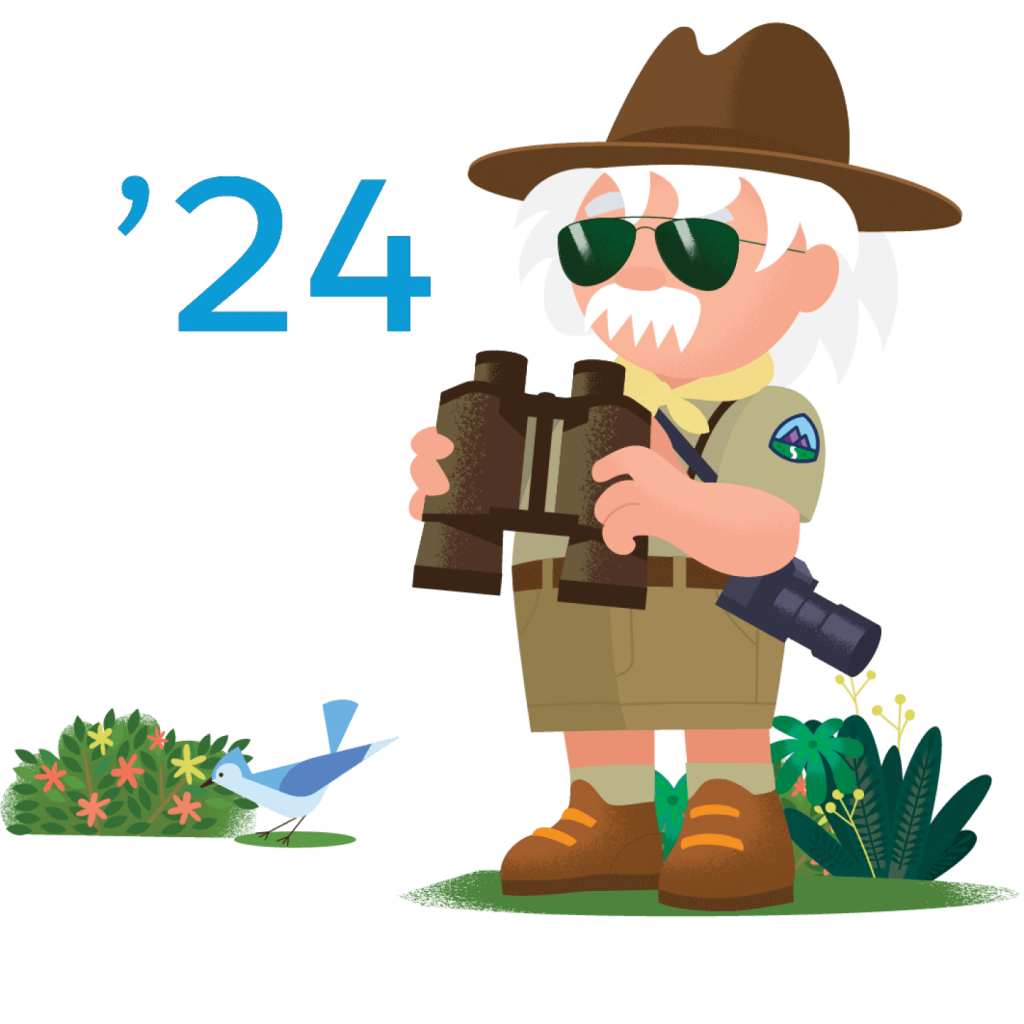
Listen to this episode of the AppChat Podcast and many others here. And be sure to subscribe on iTunes to stay up-to-date on the latest episodes!
**Please note that quotes have been lightly edited to improve readability.**
CodeScience CEO, Brian Walsh, recently hosted Ron Huddleston, Chief Partner Officer at Twilio, on the AppChat Podcast to discuss his experience building out ecosystems for various organizations and the importance they hold.
Before landing at Twilio, Huddleston was CVP of the One Commercial Partner organization at Microsoft, SVP of the AppExchange at Salesforce, and VP at Oracle while starting the OEM, ISV program — so he is no stranger to building ecosystems for large, enterprise organizations. With all the juicy insights shared, we wanted to pull out some of the best of moments from the episode.
If you want learn more about ISV ecosystems, check out the blog post here.
Addressing Problems are Easy, Humans are Hard
Early in the podcast, Ron reminds us that no matter how much businesses change, most problems stay the same, but getting people to connect and see eye to eye is the hard part. And the key is to learn from your mistakes so you can solve problems faster next time.
“After 20-odd years of doing this, there’s not much you haven’t seen. Where things get complicated is around human behavior, not necessarily around bringing really great solutions, great partners, and technology together to solve problems. That’s the easy part, addressing customer problems. Where things get a little crunchy is when you’re aligning different people, different organizations, different teams. I think everything up to that point is not as complicated. But again, it’s a pattern, and the patterns tend to repeat themselves. So you can sort of see around corners, the longer you do these kinds of things, which makes it easier every time.”
When Building an Ecosystem, You are a Chef and the World is Your Oyster
As Ron was discussing the complexity of building a platform and establishing credibility, he uncovers a great analogy for ecosystems and how to build them.
“The easier way to do it is to work with an ecosystem of technology, or IP, ISVs, and SIs — the ones that are trusted in the space and are already trusted by the customers that you want to serve. Work with them so they can understand how your platform can help. And then build what’s essentially, if those are the ingredients, the recipe book on how all those ingredients come together and help essentially cook a meal. Serve a beautiful meal for the customer. And so that’s why building ecosystems is a cool job. You get to be the chef, kind of…But you know, if you think about it that way, ecosystems are really just a bunch of small solution maps, or what I was just calling recipes. It’s a group of technologies, partners, companies, expertise, that solve particular problems.”
From there, Ron clarifies that having these “recipes” is not only beneficial for the ecosystem, but also the partners involved.
“Having an ecosystem or being part of a partner’s ecosystem helped the companies that were the best, the most innovative, or had the best technologies, punch above their weight class, and could help change the market really quickly. It’s this symbiotic relationship between these platform players that need partners for credibility and solving complicated problems; but it’s also great for partners, for ISVs and SIs, because it helps the best rise to the top. It helps the best innovate. If you are the type of SI or ISV that specializes in a particular place or industry, it helps you get access to customers where you might not get access before. It’s symbiotic when it’s working really well, and nothing stands in the way, and there’s no friction. And it’s really just about matchmaking. You’re a cook and all your ingredients are great — you cook the best stuff.”
How Two Different Enterprises Built Their Ecosystems
With Ron’s experience at Salesforce and Microsoft, he provides a unique perspective about the differences between Salesforce and Microsoft as they built out and established their ecosystems and what some of the trade-offs were.
“Here’s how I pulled the AppExchange together. There were limitations around technology, dollars, and investment dollars, which eventually got solved in one way, or shape, or form. But, there was really very little limitation to time and access that could be provided. The big strength that Salesforce had at the time was that they were leading in the cloud. They were innovators, had access, and had a sales organization. Much of the beginnings of that ecosystem were built around people receiving essentially go-to-market support, help, and guidance from Salesforce, in return for their technical investment in building something with Salesforce. And that was the trade-off that they made. Microsoft is a different beast, and they grew up through partners, and they always had partners. But they’d gotten to such a point where they were so dominant in the marketplace that they’d essentially become demand fulfillment. The partner channel was super optimized for really educated customers to come in and want to buy something. They would go to very specific partners that would then fulfill that. And it was very educated demand fulfillment to a very educated market, which was entirely different than what we were setting up the One Commercial Partner team to do — which was to create demand. Instead of having 1,000 points of connection with super-specialized partners, we wanted to have partners that could show up in front of customers and say, “What problem do you have? What question do you have for my answers?” And then they could represent the full cadre of everything that Microsoft could do.”
Ron goes on to clarify the changes he brought in and how to drive value.
“Microsoft was just really limited historically because partners had to sort of pick their lane and stick with it. One of the things we did there was to break that down and only create a few lanes. Partners were expected to really lead the way and create demand. But in order to do that, we also had to change the finances. We had to change economics. We had to create a lot of incentives for the direct sales organization to work with them, which is a big part of it, too. Selling stuff, versus taking orders, is expensive. We had to make sure the partners could make money doing it. In that particular case, the trade-off was, being able to represent Microsoft across the board, which is a tough thing to do, but if they’d invest their time, and energy, and attention, in learning how to sell and create demand, we would make the economics work so that they could get a payback. It’s almost the opposite of what Salesforce was doing. And so they’re just very different situations.”
How Twillio is Building Their Ecosystem
To wrap up the episode, Ron shares a bit about how Twilio is approaching their own ecosystem.
“George and Jeff totally get it and understand. The idea of having a buy-build partner governance lets us understand the impact to our partners when we decide to to either buy or build. Taking all that into consideration before we act is one of the reasons why I feel really good about being here. Because they’re dead serious about it. And what they’re focused on is, if they do buy or build, they’re doing it underneath, like on the platform layer. For example, consider Flex. Sure, it’s a face — it’s a UI, but if you really look at it, it’s like an SDK for a UI. You could technically use it out of the box, but no one will.”
If you’d like to listen to the podcast in whole or read the full transcription, you can access it here.
CodeScience is an expert at building out ecosystems and the only Master PDO in the Salesforce AppExchange. Drop us a line if you have any question on building yours, or if you would like to be a guest on the AppChat Podcast like Ron Huddleston.


